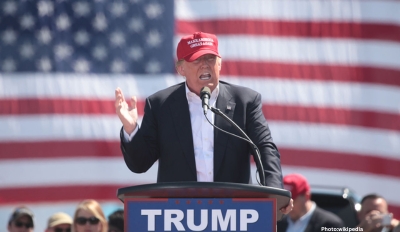Stocks reached unprecedented levels on Friday following the release of a stronger-than-anticipated November jobs report, which bolstered hopes that the Federal Reserve will lower interest rates at its upcoming meeting this month.
The S&P 500 gained 0.25 percent, and the Nasdaq Composite rose by 0.81 percent, both hitting all-time highs. The data revealed a robust rebound in the U.S. job market, with employers adding 227,000 positions in November. This was a substantial recovery from October, when only 36,000 jobs were created due to the impact of strikes and hurricanes. However, the unemployment rate ticked up slightly to 4.2 percent.
The Labor Department’s report offered reassurance to investors, indicating that October’s poor performance stemmed from temporary external disruptions rather than a deeper economic problem. This newfound confidence has led markets to assign an 88 percent probability of a Federal Reserve rate cut by a quarter percentage point at its meeting on December 18, according to the FedWatch tool.
The prospect of rate cuts sent stocks higher, benefiting Americans with 401(k) retirement accounts, which often track major stock indexes. Lindsay Rosner, head of multi-sector investing at Goldman Sachs Asset Management, commented on the developments, saying, “Data this morning was a Thanksgiving buffet with payrolls spot on, revisions positive, but unemployment ticking higher despite the participation rate falling. This print doesn’t kill the holiday spirit and the Fed remains on track to deliver a cut in December.”
Lower interest rates could ease borrowing costs for consumers, providing some relief for household budgets. Bret Kenwell, U.S. Investment Analyst at eToro, remarked, “The market still favors a rate cut from the Fed later this month and this report may not change that expectation. Had it shown blistering strength, then a discussion for keeping rates unchanged at the current meeting may have gained steam. As it is though, this report was better than expected but close enough to ‘in-line’ to keep the status quo intact – which calls for a 25 bps rate cut in mid-December.”
While the Federal Reserve’s benchmark rate does not directly control interest rates for loans, credit cards, and mortgages, it significantly influences them. Businesses typically benefit from lower rates, as borrowing becomes less costly, often resulting in stock market gains. Tom Porcelli, chief U.S. economist at PGIM Fixed Income, told Bloomberg TV, “This is a kind of number that will support the Fed cutting rates in December.” He also predicted that two or three additional cuts in the coming year are “completely reasonable.”
Since September, the Federal Reserve has reduced interest rates by 75 basis points as part of its easing cycle, bringing benchmark borrowing costs to between 4.5 and 4.75 percent. This follows a period of aggressive hikes between March 2022 and July 2023, when rates were elevated to decade-high levels.
These cuts are expected to affect various aspects of Americans’ financial lives. Credit card and personal loan rates are likely to decrease, offering relief to borrowers. However, how much rates will drop remains uncertain, as banks ultimately set Annual Percentage Rates (APRs), and any reductions may not be immediate.
On the other hand, the impact of rate cuts on the broader economy remains mixed. While economic growth continues at a steady pace, inflation persists above the Federal Reserve’s target of 2 percent. Additionally, policy uncertainty stemming from President-elect Donald Trump’s upcoming administration adds complexity to the outlook.
Business optimism surged following Trump’s electoral victory, driven by hopes for reduced regulations. However, his pledges to increase tariffs on imports and enforce mass deportations have raised concerns about potential price hikes and labor market disruptions.
Looking ahead, traders anticipate two more Federal Reserve rate cuts in 2025, with a possibility of a third before the year’s end. These expectations reflect ongoing efforts to balance economic expansion with inflation control, despite an uncertain political and policy environment.
As Porcelli noted, the Federal Reserve’s actions in the coming months could significantly influence borrowing costs and broader financial conditions. However, consumers and businesses alike will have to wait to see how these changes translate into tangible benefits.

